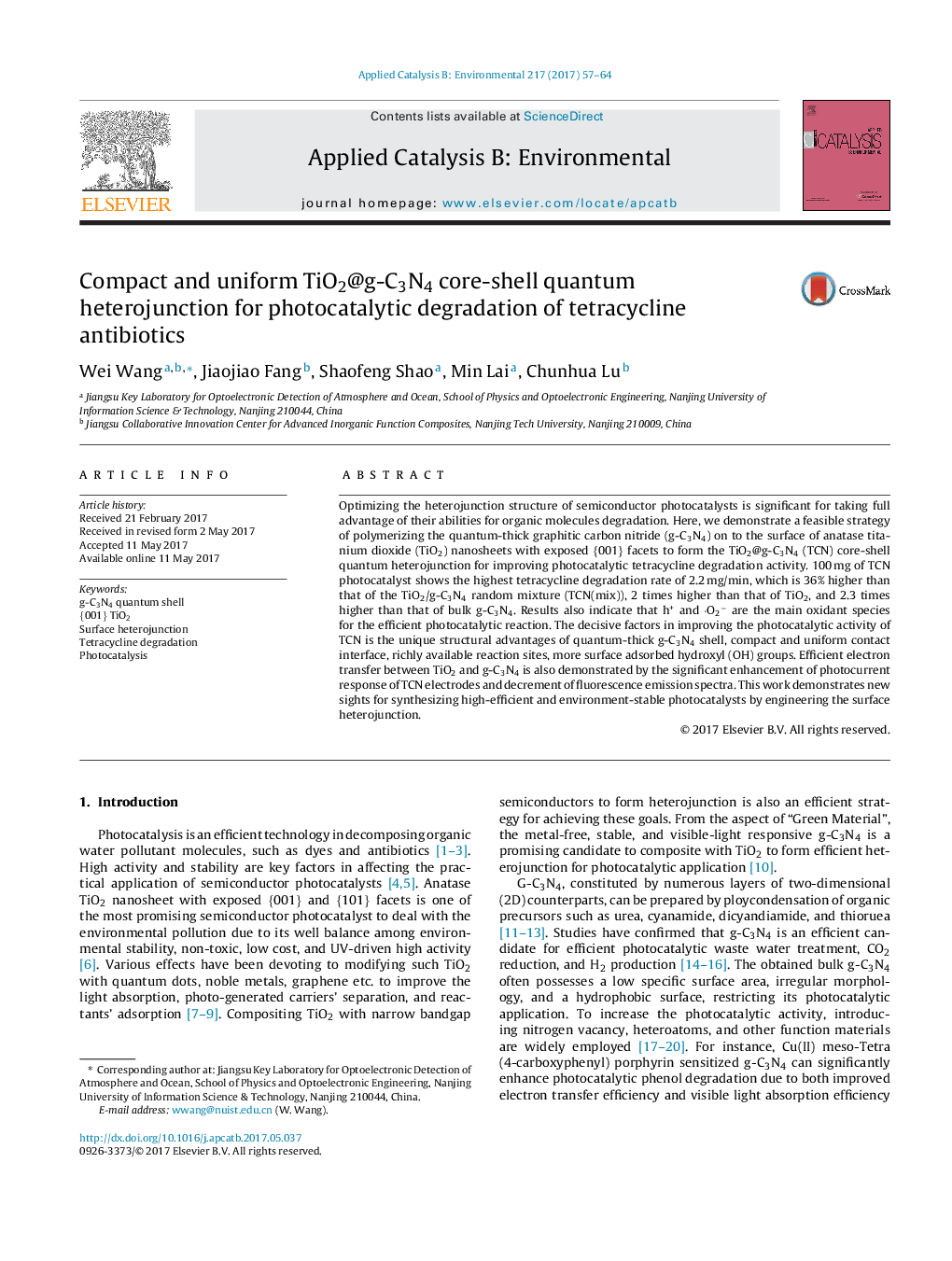| کد مقاله | کد نشریه | سال انتشار | مقاله انگلیسی | نسخه تمام متن |
|---|---|---|---|---|
| 6453911 | 1418803 | 2017 | 8 صفحه PDF | دانلود رایگان |

- Novel core-shell quantum heterojunction of TiO2@g-C3N4 is synthesized.
- The contact between TiO2 and g-C3N4 is compact and uniform.
- More reaction sites and a hydrophilic surface is obtained on g-C3N4 quantum shell.
- The photocatalytic activity toward tetracycline antibiotics degradation is improved.
Optimizing the heterojunction structure of semiconductor photocatalysts is significant for taking full advantage of their abilities for organic molecules degradation. Here, we demonstrate a feasible strategy of polymerizing the quantum-thick graphitic carbon nitride (g-C3N4) on to the surface of anatase titanium dioxide (TiO2) nanosheets with exposed {001} facets to form the TiO2@g-C3N4 (TCN) core-shell quantum heterojunction for improving photocatalytic tetracycline degradation activity. 100 mg of TCN photocatalyst shows the highest tetracycline degradation rate of 2.2 mg/min, which is 36% higher than that of the TiO2/g-C3N4 random mixture (TCN(mix)), 2 times higher than that of TiO2, and 2.3 times higher than that of bulk g-C3N4. Results also indicate that h+ and ·O2â are the main oxidant species for the efficient photocatalytic reaction. The decisive factors in improving the photocatalytic activity of TCN is the unique structural advantages of quantum-thick g-C3N4 shell, compact and uniform contact interface, richly available reaction sites, more surface adsorbed hydroxyl (OH) groups. Efficient electron transfer between TiO2 and g-C3N4 is also demonstrated by the significant enhancement of photocurrent response of TCN electrodes and decrement of fluorescence emission spectra. This work demonstrates new sights for synthesizing high-efficient and environment-stable photocatalysts by engineering the surface heterojunction.
130
Journal: Applied Catalysis B: Environmental - Volume 217, 15 November 2017, Pages 57-64